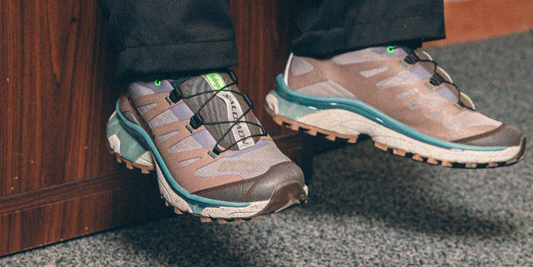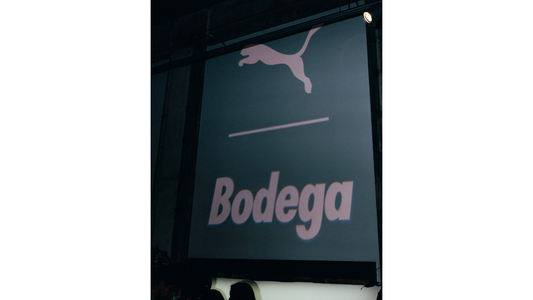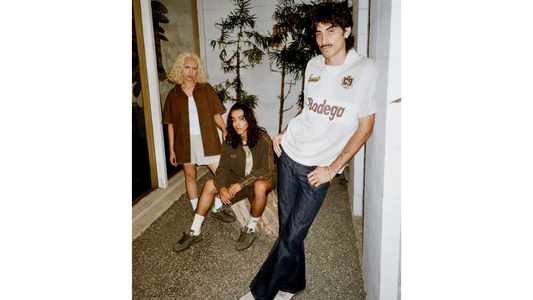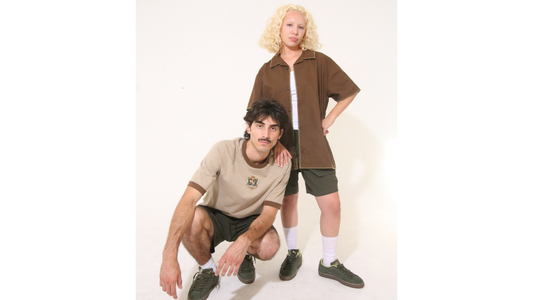In our latest Creative Community we sit down with Copenhagen based artist and photographer, KC Ortiz. Throughout his work, Ortiz explores and questions our individual and collective responsibilities through the lens of political and humanitarian upheaval, inequality, and technological advances. His journey through the art world might be deemed as highly unconventional but it’s certainly rich in experience.
A Chicago native, Ortiz was introduced to street art as a kid through the graffiti scene in the 90s. Although the adrenaline rush and outlaw element may have been the initial appeal for a latchkey kid, Ortiz found these years critical in his development as both an artist and a person. After a few run-ins with the law Ortiz found himself behind bars. However, it was this pivotal time spent incarcerated that Ortiz experienced what he deems an “intellectual awakening”. With time on his hands, he became immersed in newspapers and found both interest and concern in current events on a local and global scale. The realization that, although he was imprisoned, nothing compared to the humanitarian catastrophes devastating innocent people on a daily basis, would soon inspire Ortiz to give a platform to these stories and retire the spray paint can for a different medium.
Upon release, Ortiz taught himself photography and began working as a photojournalist around the world. From rebel armies in Burma to hiding out in the mountains of Laos, Ortiz had a front row seat to the human condition. Needless to say, these life changing experiences gave him a raw perspective on the world and what would inevitably influence his work as an artist today. We caught up with KC from his home-base in Copenhagen to discuss the impact of A.I. in today's world, the 90s DIY art scene, and much more for our Creative Community feature.
Thank you for your time KC!
Q: How did you get involved in the graffiti scene in Chicago - what was it like?
A: The first art that really inspired me was the graffiti I saw on the street in Chicago, I don’t have any memories of art or creating before that really. At that point I think it was the outlaw element of graffiti that called to me more than the artistic part. The community, my ego at the time, and the adrenaline rush of graff was more of a draw to me than the actual art of it. Over those years the artistic part began to grow and develop naturally as I did as a person.
Q: Were you already interested in art from a young age? Were there any heavy inspirations growing up?
A: I was active in the 90’s in Chicago, which was a wild time to be on the streets. A lot of our scene was based around beef, there was constant wars, a lot of mixing of gangs, hustling, and graffiti at that time. It was a wild scene and time in the city’s history and the graff world reflected that. We were all kids with a lot of freedom, latchkey style, the world was ours. We spent our days racking and our nights painting. You would just find each other on the train, bus stops, through schools, wherever. From a young age you learned how to navigate it all, I often think graffiti was the best education I could’ve asked for.
"I had a bit of an intellectual awakening inside prision, it’s where my interest in global justice, photojournalism, and telling peoples' stories started."
Q: What was your biggest take away from being incarcerated? Can you elaborate on why you were drawn to photojournalism specifically?
A: Overall, the main thing about prison, is it sucks, ha. I mean, I had it good in prison and was as sorted as one could be in that situation, but it is shit to hurt your family and friends with your absence. Keeping it real, at the time, my take away was that I was more connected and respected then before I went in, doing time didn’t bother me at that point, I was in a different mind state. I had a bit of an intellectual awakening inside, it’s where my interest in global justice, photojournalism, and telling peoples' stories started. I remember reading the newspaper and learning about conflicts across the world, while listening to everyone I was with in prison complain about our situation, and I couldn’t help feeling like we were a bunch of criminals but still were getting fed, it wasn’t so bad compared to others who had never done anything wrong but were born in the wrong place at the wrong time.
Q: What was the first camera you picked up after getting out?
A: Once I was out of prison I taught myself photography using borrowed cameras from friends. I think my first camera was one of Pose’s old ones from his studio he gave me. Pose, along with Roger Gastman and others, was one of the people who were quite instrumental in getting me fully off of crime life and showed me there was a space and a place for me in an artistic and creative capacity.
Q: How did you land your first job in photojournalism? Can you talk about the experience?
A: Well, the first international assignment was actually for the old Swindle magazine, nothing too crazy, I was shooting MSK crew painting and partying in South Korea. My first proper news assignment i think was covering a rebel army in Burma during a clash with the Burmese government. I had already been shooting for some time in that region and sold stories after shooting them, but that was the first time I landed on front pages of newspapers across the world.
"It bothered me that the media was ignoring these critical stories because they didn’t sellI so took it upon myself to try to help get those stories out."
Q: What drew you to underreported conflicts as a main focus? Surely safety concerns alone would deter many people.
A: I figured I was kind of built for that work. Graffiti and street shit taught me how to get into anywhere I wanted and talk my way out of anything I found myself in. In essence it bothered me that the media was ignoring these critical stories because they didn’t sell or register on most people’s radar of interest so I took it upon myself to try to help get those stories out.
"Every story I worked on and every person I met sticks with me."
Q: Was there any one trip, travel story, or recurring theme as you were in the field that has always stuck with you?
A :It all sticks with me. Every story I worked on and every person I met sticks with me. I’d say the one I think of the most is the Hmong rebels and their families in Laos, just totally abandoned by the world and most likely, all killed by now. They were the CIA’s secret army in Laos during the Vietnam war and were left behind by the U.S. at the wars end, surviving with their families for decades in the jungle while under constant attack. It was the most intense story I worked on, both for the risk and logistics as well as the emotional attachment end. Very long story short, the Lao People’s Army found out I was in the mountains with the Hmong and came hunting us. It turned into a long game of cat and mouse in the jungle to cross the border down into safety in Thailand. There was a lot of close calls on that trip, i made it out but I’ve never stopped thinking about those who didn’t have that option.
"Everything I’ve come across influences how I see the world, and how I see the world is reflected in my paintings, so it’s all part of my current practice."
Q: How did your experiences in photojournalism shape the way you see the world? You’re art?
A: I’ve had a front row seat to the whole gamut of the human experience, having seen the worst and best in every walk of life. Everything I’ve come across influences how I see the world, and how I see the world is reflected in my paintings, so it’s all part of my current practice. And to be clear, the main take away I have from everything I’ve experienced, covered, and documented is that the world needs Revolution and needs it yesterday. Every story I’ve ever covered, researched, worked on, it all comes down to the same “why”. Someone is profiting. It all comes down to greed. That is the bottom line. Greed is rewarded in our current capitalistic structured system when it should be absolutely shunned.
"Instead of racing to finish to beat the cops I’m racing against the clock to make as much as I can before I’m gone."
Q: With your background in graffiti, have you found a way to translate that energy onto canvas, or do you see them as two separate eras of your creative journey?
A: Graffiti is the cornerstone and foundation I grew from and built everything out of. I’m proud to come from graffiti and the world’s first DIY youth led, organic art movement, but what I do now is removed from graffiti world and I am not comfortable calling myself a graff writer, I am not active on the streets. The energy is similar, my approach is still always freestyle, but I’m in the studio and using traditional materials. Instead of racing to finish to beat the cops I’m racing against the clock to make as much as I can before I’m gone.
Q: Technology and AI seem to be a real focal point in your recent work - in what ways do you think technology holds the biggest threat for the future?
A: A.I. has been a major focal point of my work these last years. I believe we are alive during one of the most fundamental changes to society and humanity as a whole. Going forward the world is going to be split into pre-AI and post-AI and we are balancing on that tipping point right now. People are severely underestimating the impact AI is going to have on every aspect of our lives. The chat and art AI programs are getting all the attention in media but they are the least significant impact, it’s missing the point.
It’s the AI programs you don’t know about, the military and corporate developed programs that are coming and are going to own you in every way you can and can’t imagine. In 5 years we will no longer be able to believe our eyes with anything we watch, in 10 years you may be answering to an AI Program as your boss.
"Every piece I create is a call to unity and arms to break the corporate oligarchy system that we all live under."
Q: Can you speak to your work as it relates to activism? You’ve said in the past it functions as a call to arms.
A: Every piece I create is a call to unity and arms, as I said above, we absolutely need a global revolution to break the corporate oligarchy system that we all live under. Those in power will never voluntarily hand over their positions or privilege, leaving no choice but for direct conflict to take back what belongs to everyone. I wish it wasn’t so, but I am unfamiliar with any successful revolution that came through talk and not action.







